Opting Outside: Students Plunge Into Watershed for Immersive Course
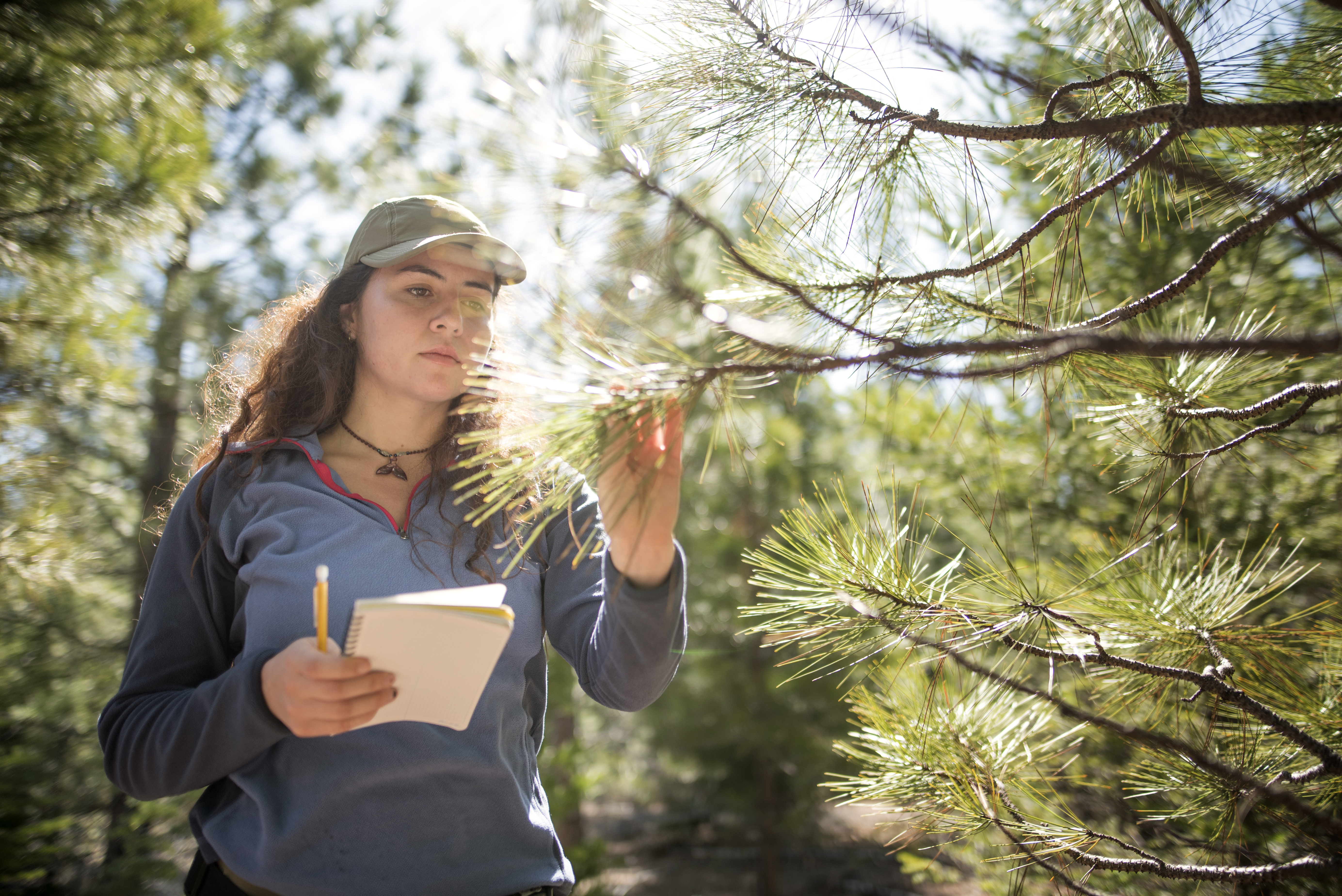
Michaela Marr examines a tree during the Big Chico Creek Watershed Tour.
Imagine following a drop of water along its journey, from its origin at the headwaters of Big Chico Creek all the way to the confluence with the Sacramento River. Over two weekends in March and April, 44 students had the opportunity to do just that—thanks to a new one-unit course made possible by the Center for Water and the Environment. Using a variety of multidisciplinary research techniques, the students engaged in complex, real-world problem solving and developed a better understanding of local watersheds’ value within the larger ecological system. Here, student Michaela Marr shares her experience.
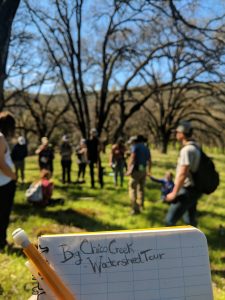
I signed up for the Big Chico Creek Watershed Tour with little knowledge of what this trip had in store for its students and no idea of the adventure that awaited us. Whether banding owls or wading through ice-cold water in pursuit of insects, it would become unlike anything I had ever experienced. This was the first time a class like this has ever been implemented at Chico State, and I am proud to say I was among the first to be a part of it.
As I sit here trying to paint a picture of what I experienced, I cannot possibly do justice to the humbling natural landmarks our class studied and enjoyed, the sacred wildlife we observed, and the meaningful studies that showed us the watershed in a whole new light. But I’ll try!
In short, our purpose was to study the watershed in order to understand how it works as a whole and learn about the wildlife that exists there. Our class spent two incredible weekends camping on Big Chico Creek Ecological Reserve (BCCER) and exploring study sites ranging from the Sacramento River all the way upstream to the creek headwaters.
The course was open to all majors who are able to find it relevant to their coursework, with special focus on biology, geography, agriculture, geological and environmental sciences, civil engineering, and science education.
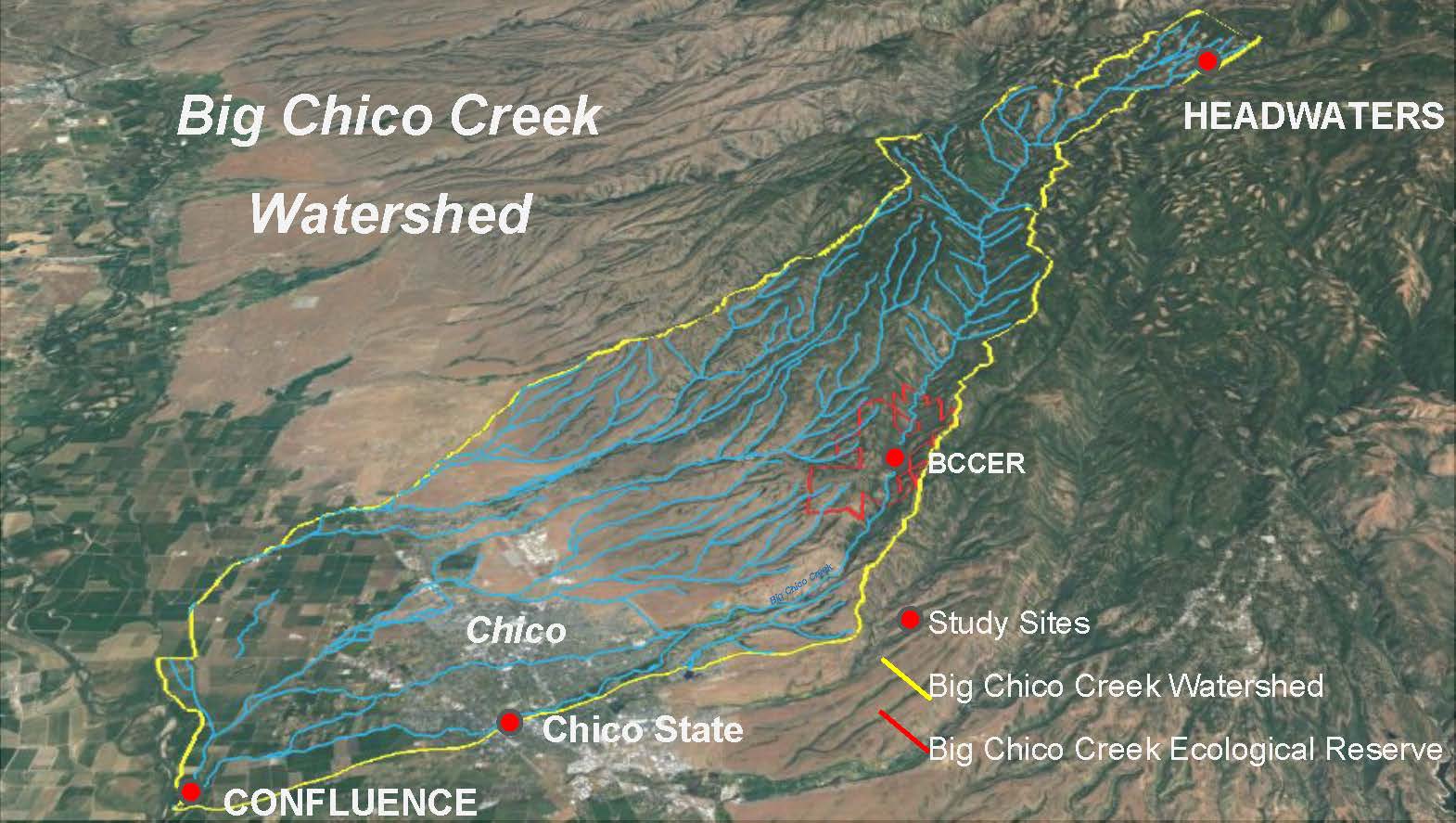
Representatives from several local companies and organizations came to lecture, direct our activities, and teach us how our data collections and watershed studies were applicable to their trades and could help us in our future careers.
Our first day, we set up camp at BCCER and started our land survey with a scavenger hunt. Navigating only by a handheld GPS device, we hiked all around the reserve making observations on vegetation along the canyon, rock and sediment erosion, and physical obstacles preventing water flow.
After the winners of the hunt proudly accepted their title, we enthusiastically recounted all of the critters we encountered along our hike, collecting wildlife cameras, and discovering which species were attracted to certain habitats.
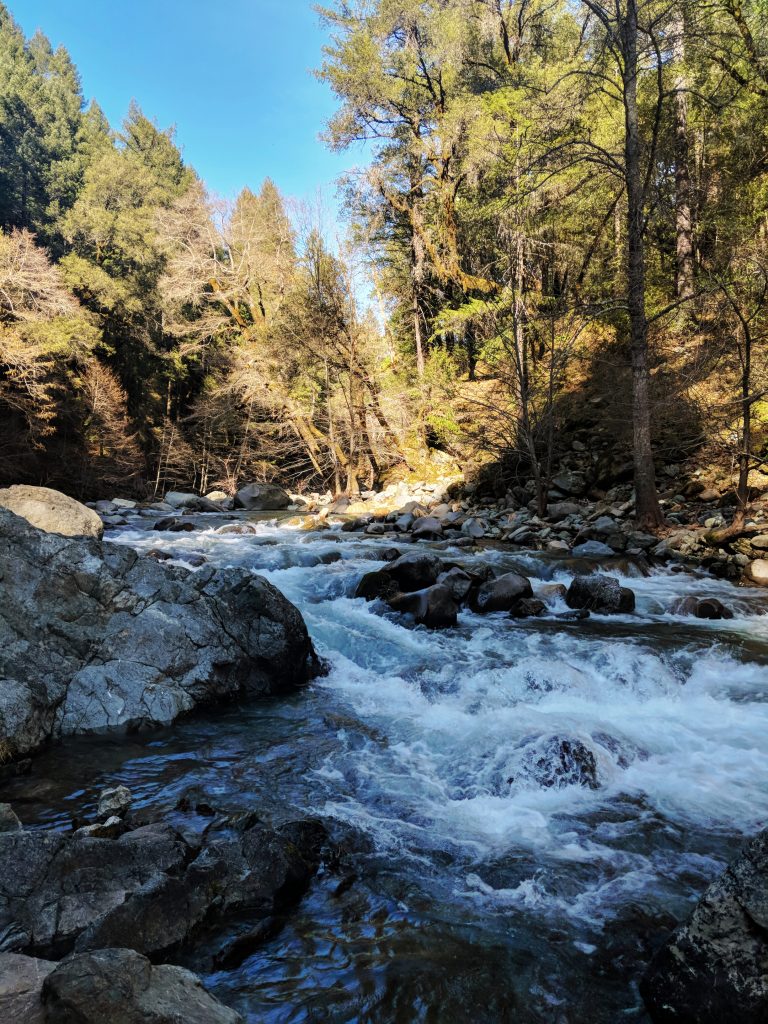
At the creek, several civil engineers lectured on elevation points along the water, the waterflow discharge, how to measure these features, and how the data we helped collect was applicable to their work and their studies. After every activity we were asked to reflect on questions about the watershed, which really helped us probe our minds and tie what we learned back to the purpose of our journey.
By then, the sun had begun to set and we all headed back to camp to meal prep and build a campfire. The rest of the night consisted of a delicious dinner followed closely by s’mores, campfire stories, and a special night activity—owl rebanding!
A few members of the Altacal Audubon Society conducting research on the Northern Saw-whet Owl Migration Monitoring Project allowed students to assist and observe their monitoring of the endangered owls on the reserve. Members showed us how the owls are handled and how they are recorded in order to keep track of their health.
Those of us who chose to stay up into the late hours of the night shared scary stories that had us terrified to retreat to our tents. But retreat we did, in order to recharge for the day ahead. We would spend the rest of the weekend analyzing plant and insect interactions to study species competition, collecting insects from the river, observing microbiology, hiking around the reserve, and learning how to analyze post-burn vegetation.
And the journey wasn’t over.
A month later, to complete our survey, we travelled to Lakeview Meadows to study forest restoration, the headwaters of Big Chico Creek to make water quality assessments, Doe Mill Ridge to study post-burn fire intensity, and the Sacramento River to take vegetation and species data on a riparian restoration project site. What a whirlwind!
Riding the bus back to campus on the last day, we all reflected on our watershed experiences—being out in nature with no city life concerns and connecting with each other, instead of being absorbed with our cell phones and technological gadgets. Not one of us wanted to return to reality.
I can say with certainty the Big Chico Creek Watershed Tour has not only proven to be my favorite class at Chico State so far, but an unforgettable experience that opened a whole new world to me surrounding the watershed.
I stepped out of the tour van knowing the concepts I learned, the interconnectedness of the watershed with surrounding wildlife, and the friendships I made will resonate whenever I walk by the creek running through campus, and I will always hold it as a treasured memory in my heart.
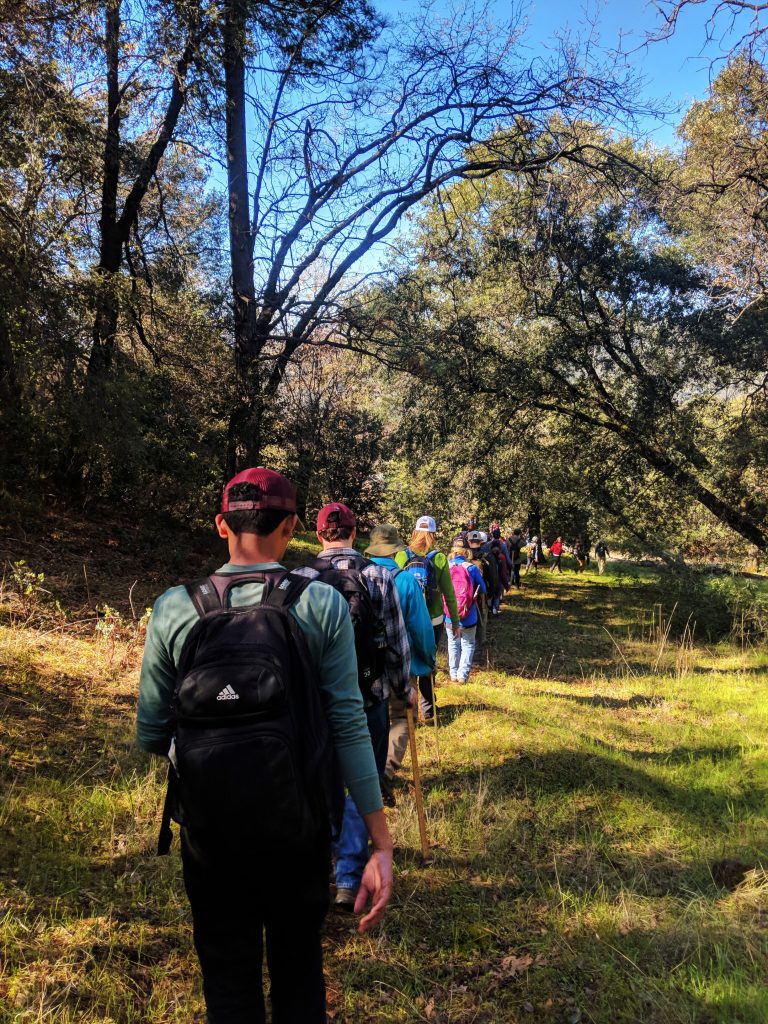
The interdisciplinary aspect made the entire experience even better. Toward the end of their college careers, students often get locked into classes just pertaining to their majors. I think we are hungry for an opportunity to explore other disciplines, escape from the mundane, and get out of our comfort zones. I was itching to get outside of the walls of a classroom, and the watershed tour really helped reinspire me about my major—for all the reasons I chose it in the first place.
I would like to thank all of the trip directors, as well as all of the companies, organizations, and nonprofits who prepared activities and lectured during the program, including BCCER, Altacal, Sierra Pacific Industries, Aquatic Bioassessment Laboratory, and River Partners.
I also want to thank the members of the Mechoopda tribe who accompanied us and allowed us to study the land with respect and reverence. And I extend special thanks to all of the unpaid volunteers who made this class possible. Your dedication and thoughtful planning truly showed through the enjoyable time we all had. I sincerely hope that the University keeps offering this outdoor learning program for future students.
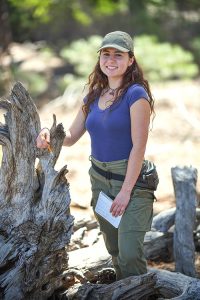 Although the watershed demonstrates immense power as a physical feature, its health has proven to be extremely delicate by its reactions to all activities that occur around it: the weather, the roads, the soil, the plant life, the animals, and the people.
Although the watershed demonstrates immense power as a physical feature, its health has proven to be extremely delicate by its reactions to all activities that occur around it: the weather, the roads, the soil, the plant life, the animals, and the people.
I think that our future Wildcats deserve to experience the watershed tour in order to understand what a beautiful resource we have in Chico—one that provides life to the valley and makes our town, our University and our very presence here possible.
Michaela Marr is a physical and environmental geography major in her third year at Chico State.


